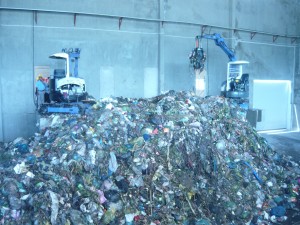Use of biotechnology in reducing the use of chemical pesticides, herbicides and fertilizers

A lot of debate is going on the overuse of chemical herbicides, pesticides and fertilizers. They become an environmental hazard because they undergo degradation by microorganisms and ultraviolet light which releases toxic chemicals in the environment. Using biotechnology, bacterial pesticides and viral pesticides are being developed which will help in reducing the use of chemical pesticides. Several companies in USA like Monsanto, Mycogen, Ecogen, Repligen, Zoecon etc are actively involved in the development of biological pesticides. The trials are going on to use the genetically engineered live soil bacteria for coating seeds before planting. Another method being tried is to kill the recombinant bacteria and apply them to the leaves of crop plants. Both these approaches protect the toxin from degradation by microbes or ultraviolet rays once applied to the crop plants.
The company Ecogen Inc. was involved in developing biological pesticides against the two major crop pests budworm and ballworm by transferring a gene from Bacillus thuringiensis (Bt), into either a naturally occurring soil bacterium or in to a strain of Pseudomonas. Bt insecticides are already being marketed for past few years and in future these will be modified using genetic engineering and will be used against a variety of insects.
Genetically engineered insect resistant plants have been successfully produced which will further help in reducing the use of insecticides in the future.
The experiments are going on to develop environmentally safe herbicides. In order to use these herbicides for crop protection programme, genetically engineered herbicide resistant plants have been produced in a variety of crop plants. This will ensure the use of environmentally safer herbicides.
Biofertilizers
Biofertilizers are also being used in place of chemical fertilizers to further reduce the environmental hazards caused due to chemical fertilizers. The term biofertilizers is used to refer to the nutrient inputs of biological origin to support plant growth which is generally achieved by the addition of microbial inoculants as a source of biofertlizers. Biofertilizers broadly includes the following categories:
A)Symbiotic nitrogen fixers- The diazotrophic microorganisms are the symbiotic nitrogen fixers that serve as biofertilizers e.g. Rhizobium sp., Bradyrhizopium sp.
B) Asymbiotic nitrogen fixers- The asymbiotic nitrogen fixing bacteria can directly convert the gaseous nitrogen to nitrogen rich compounds. On the death of these nitrogen fixers, the soil becomes enriched with nitrogenous compounds thereby serving as biofertilizers e.g. Azobacter sp., Azospirillum sp.
The blue green algae, multiply in the water logging conditions and fixes the nitrogen. They accumulate the biomass which helps in improving the physical properties of the soil. This is useful for reclamation of alkaline soils besides providing partial tolerance to pesticides. The most common blue green algae are Azobacter sp. and Azospirillum sp. Azolla, which is an aquatic fern contains an endophytic cynobacterium Anabaena azollae in the leaf cavities providing symbiotic relationship. Azolla with Anaebaena is useful as biofertilizer.
C) Phosphate solubilising bacteria- Some bacteria like Thiobacillus, Bacillus are capable of converting non-available inorganic phosphorus present in the soil to organic or inorganic form of phosphate. These bacteria can also produce siderophores, which chelates with iron, and makes it unavailable to pathogenic bacteria. Siderophores are iron-binding low molecular weight (400- 1,000 Daltons) peptides synthesized by some soil bacteria.
D) Organic fertilizers- Certain types of organic wastes are used as fertilizers e.g. animal dung (cow dung, elephant dung etc.), urine, urban garbage, sewage, crop residues and oil cakes. All these wastes can be converted in to organic manures.
Advantages of using biofertilizers
- Biofertilizers improve the tolerance of plants against toxic heavy metals.
- It is possible to reclaim saline or alkaline soil by using biofertilizers.
- Use of biofertilizers helps in controlling environmental pollution.
- Fertility of soil is increased year after year.
- Low cost and easy to produce.
- Biofertilizers increase the physico-chemical properties of the soil, soil texture and water holding capacity.
Some of the limitations encountered while using the biofertilizers are that they alone cannot meet the total needs of the plants for nutrient supply and also they do not produce the spectacular results as observed in synthetic fertilizers. It is important to evolve an approach which can maximize the use of biofertilizers and reduce the dependency on the chemical fertilizers in the near future with out affecting the crop productivity. This will help us to solve the environment related problems caused due to overuse of chemical fertilizers.
Accoding to Biotechnology4u.com